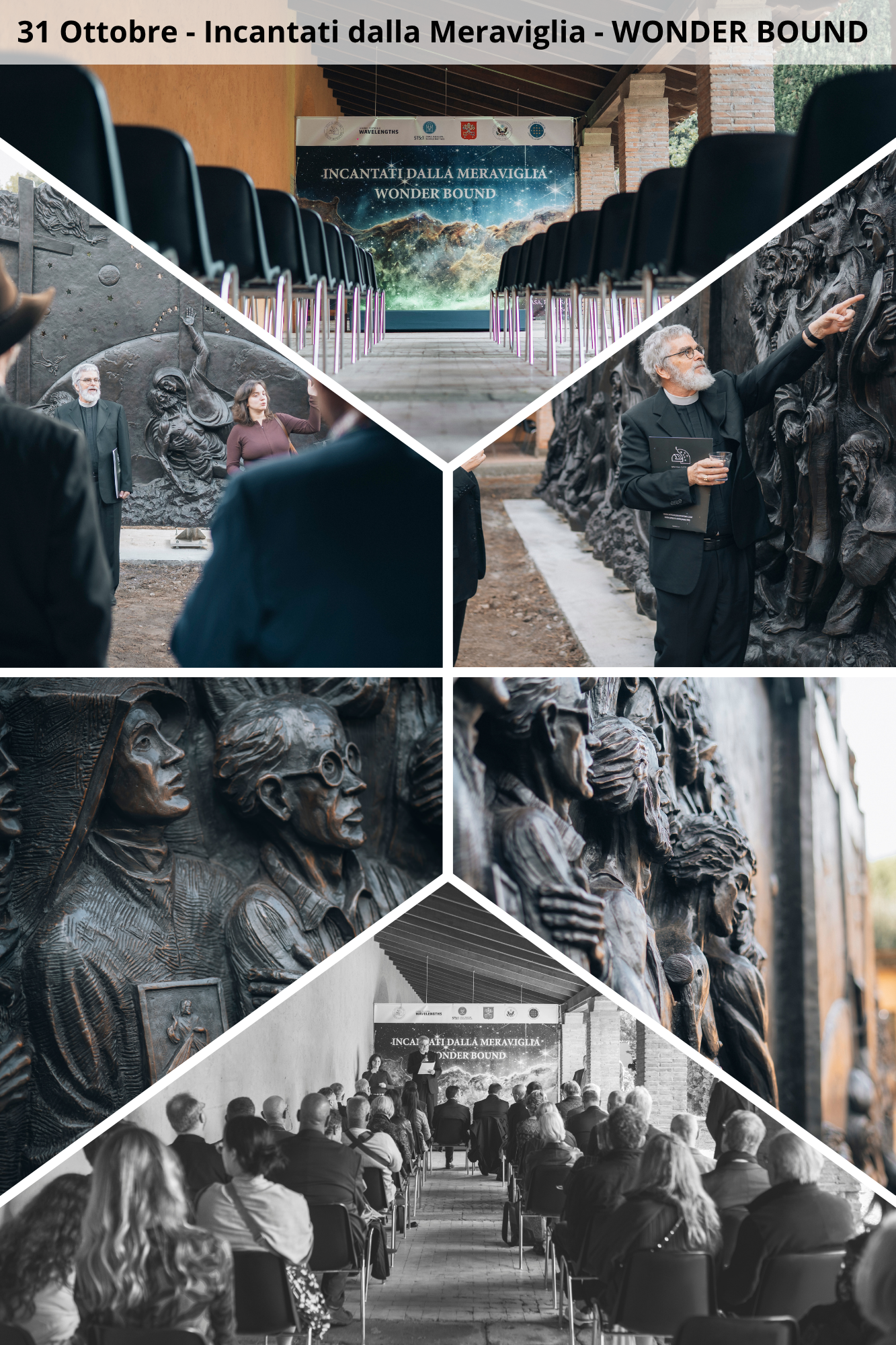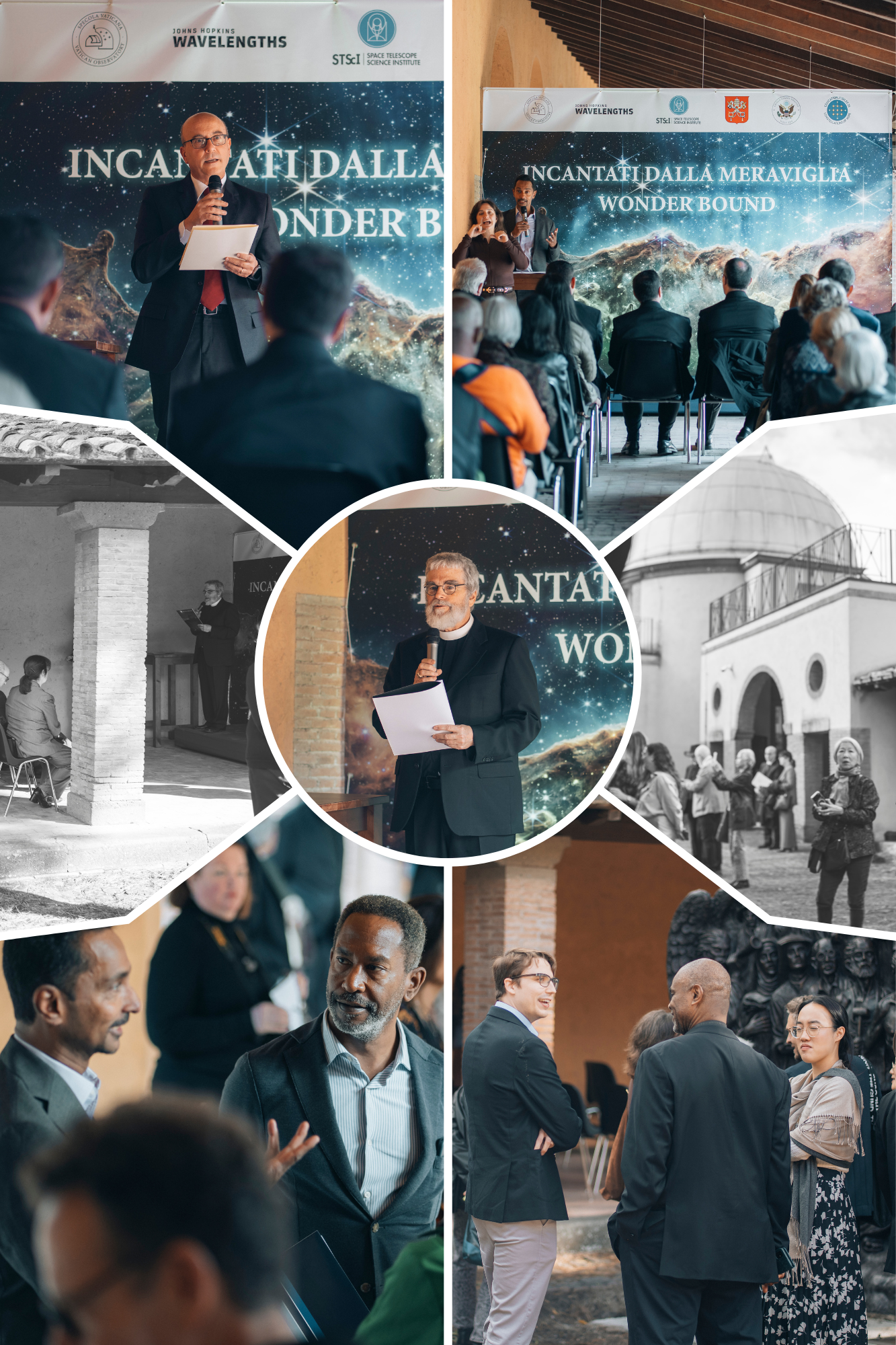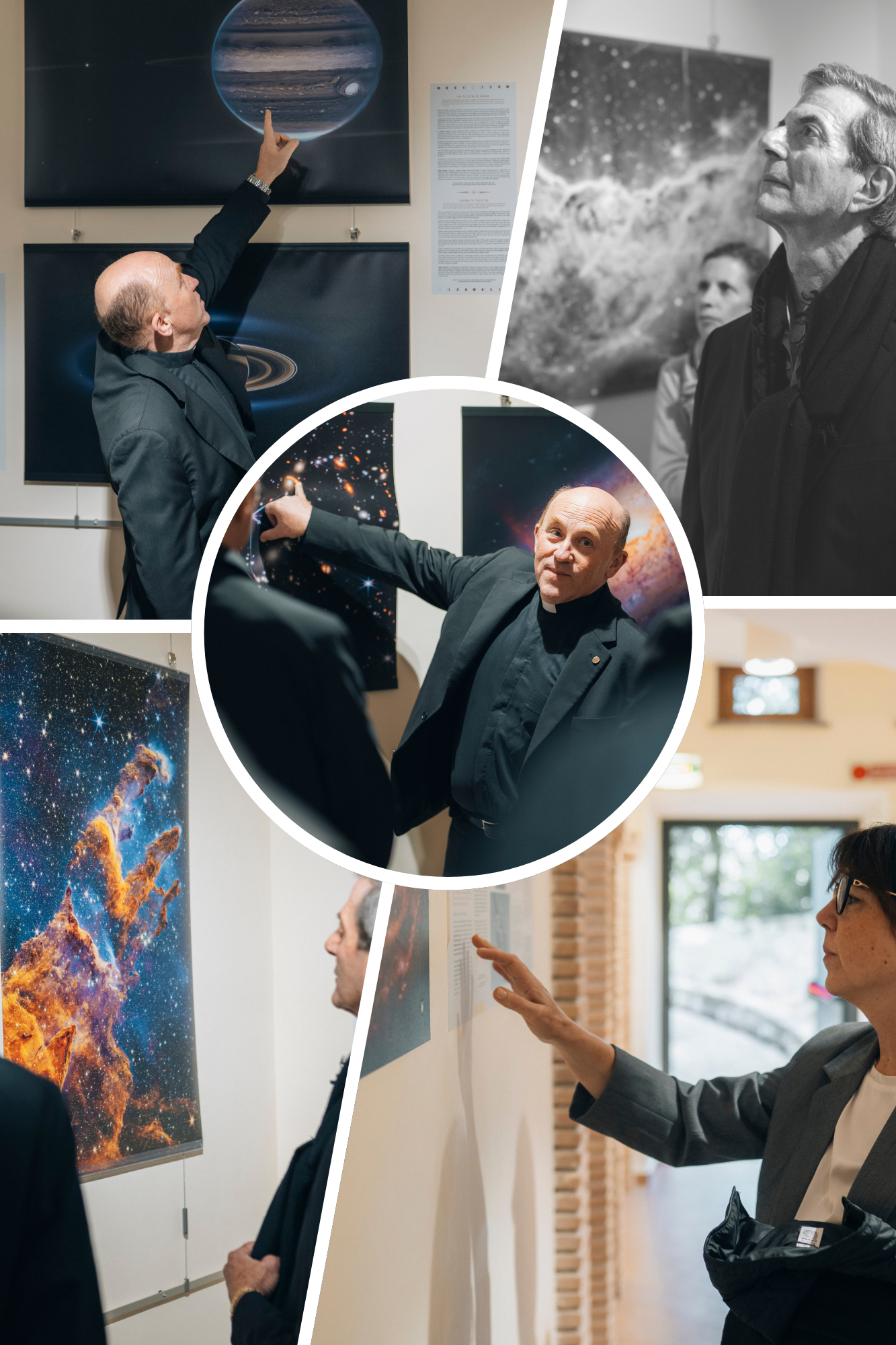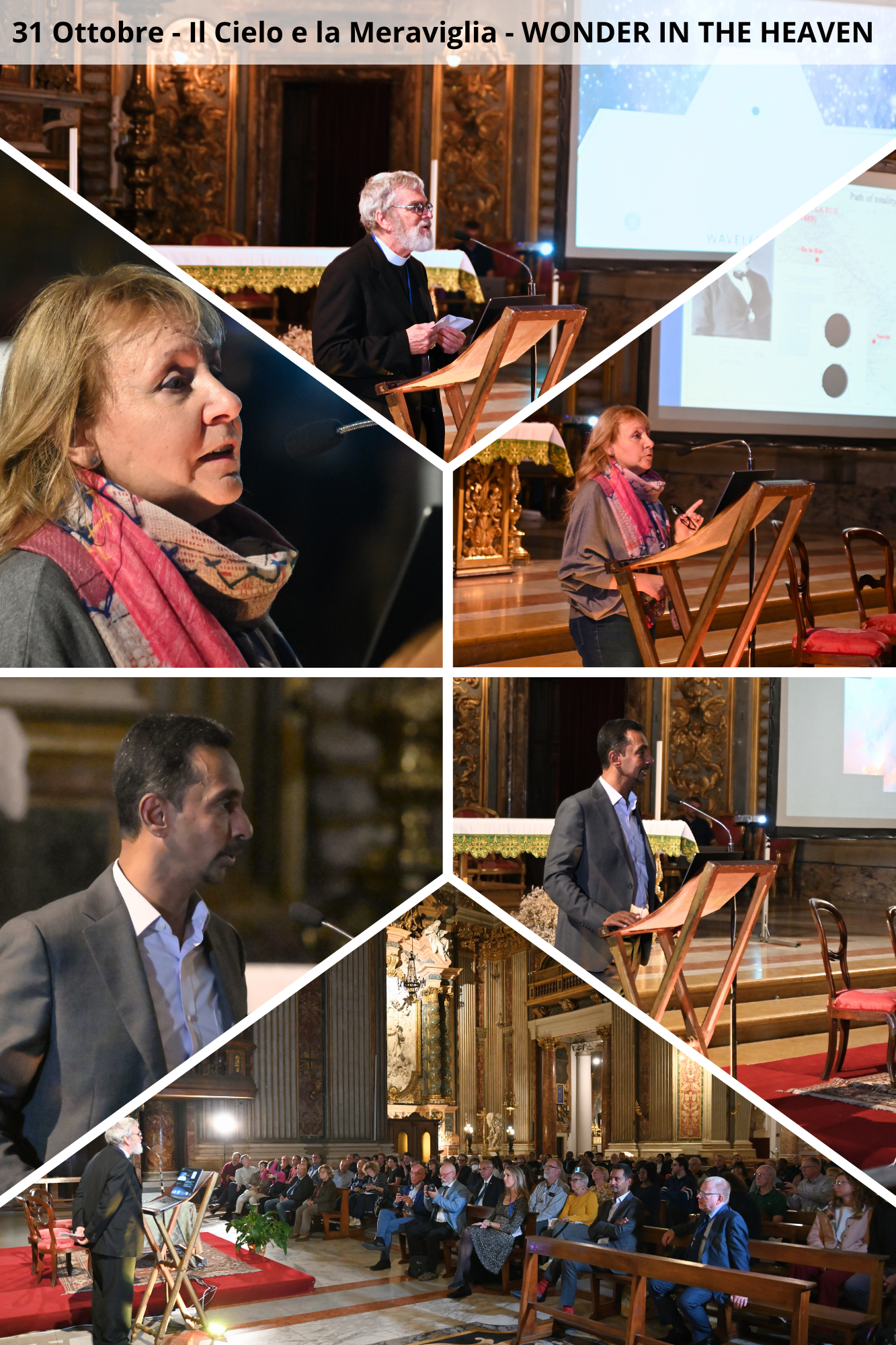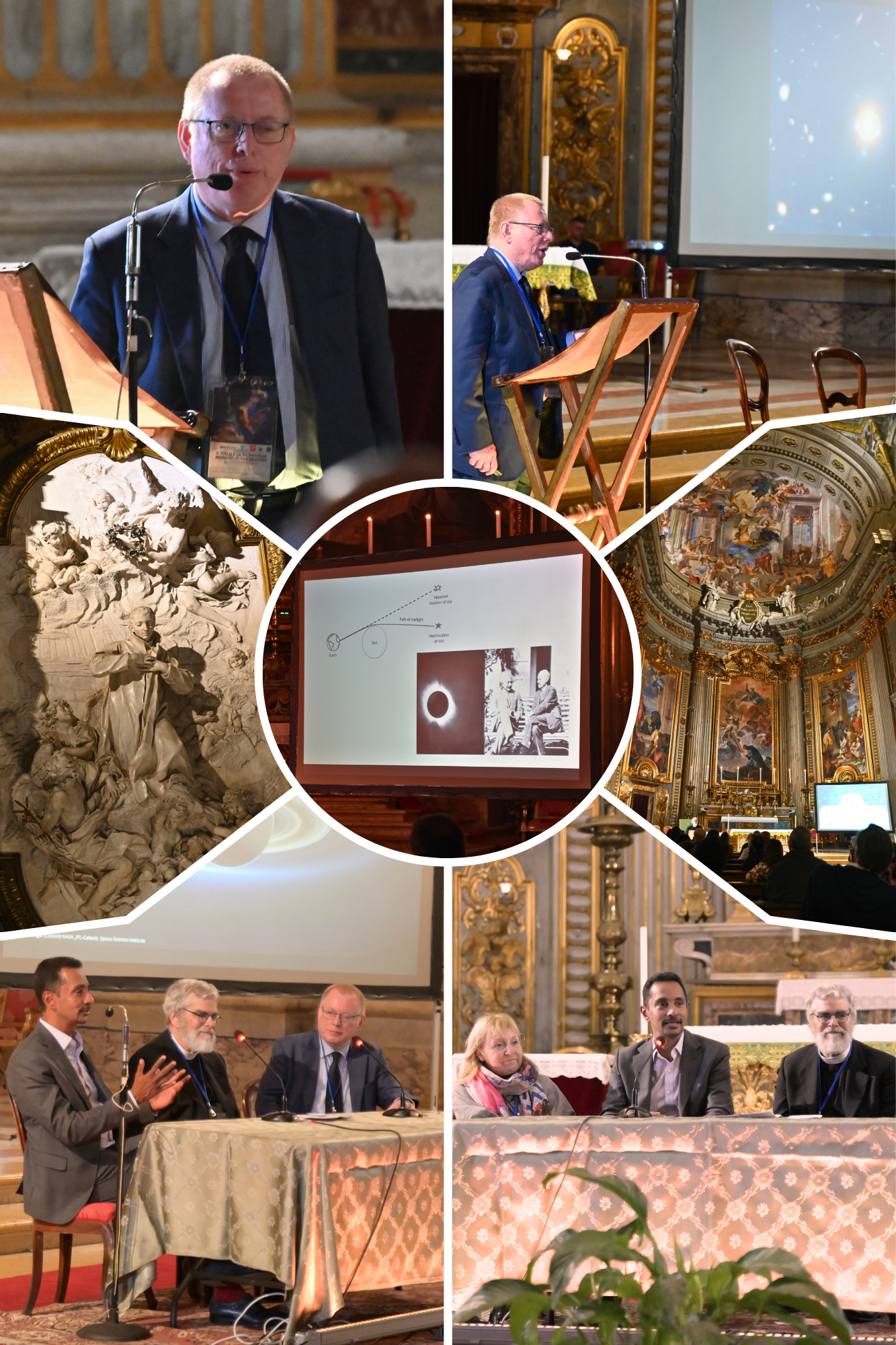Immagini dai telescopi spaziali Hubble e James Webb accompagnate da narrazioni dei principali ricercatori nel campo delle scienze spaziali nella esposizione organizzata dagli "astronomi del Papa", insieme alla Johns Hopkins University e allo Space Telescope Science Institute, che inaugura il Centro Visitatori della Specola realizzata nell’ambito delle celebrazioni del Giubileo

La Specola Vaticana, in collaborazione con la Johns Hopkins University e lo Space Telescope Science Institute (STScI) annuncia l’inaugurazione di “Incantati dalla Meraviglia”, una straordinaria mostra di immagini cosmiche provenienti dai telescopi spaziali Hubble e James Webb. Attraverso immagini in grande formato accompagnate da narrazioni dei principali ricercatori nel campo dell’astrofisica, la mostra rivela come le osservazioni di questi telescopi, rese possibili grazie al lavoro collaborativo di migliaia di persone nel corso dei decenni, abbiano fatto progredire la ricerca scientifica e ampliato la comprensione umana dell’universo.
Apertura il 3 novembre
“Incantati dalla Meraviglia” è la mostra inaugurale nel Centro Visitatori della Specola realizzata nell’ambito delle celebrazioni del Giubileo 2025. L’apertura al pubblico è prevista per il 3 novembre. Situato nei Giardini vaticani a Castel Gandolfo, il Centro Visitatori è regolarmente aperto al pubblico. Le prenotazioni possono essere effettuate tramite il sito ufficiale dei Musei Vaticani, disponibile in italiano e in inglese. La mostra trasporterà i visitatori nelle profondità più remote dello spazio attraverso stampe a colori di grande formato, raffiguranti immagini iconiche catturate dai telescopi spaziali Hubble e James Webb. Con soggetti come le aurore di Giove, rappresentazioni di esopianeti e luminose nidiate stellari, queste immagini danno vita a sistemi celesti vibranti su una scala mozzafiato, offrendo al pubblico un incontro ravvicinato con l’universo. Ogni immagine sarà accompagnata da un commento di un ricercatore della Johns Hopkins University o dello Space Telescope Science Institute, che ne metterà in luce non solo la straordinaria bellezza, ma anche le scoperte scientifiche a essa collegate.
Gioia misteriosa e sublime bellezza
Come affermato da Papa Leone XIV, rivolgendosi ai partecipanti alla Scuola Estiva 2025 della Specola Vaticana, “queste immagini ci colmano di meraviglia e, in verità, di una gioia misteriosa, mentre contempliamo la loro sublime bellezza”. Dall’inizio delle loro missioni, Hubble nel 1990 e James Webb nel 2021, i telescopi hanno offerto nuove prospettive su un’ampia varietà di fenomeni celesti, fatto luce sulle nostre origini cosmiche e rivelato nuove immagini dell’universo primordiale. Insieme, hanno realizzato quasi due milioni di osservazioni su oltre 100 milioni di oggetti astronomici, alimentando migliaia di pubblicazioni scientifiche, stimolando l’immaginazione umana e aprendo nuovi orizzonti su ciò che si trova oltre i limiti attuali della nostra conoscenza.
Senso di stupore
Fratel Guy Consolmagno, esperto di meteoriti e direttore emerito della Specola Vaticana, commenta: “Queste immagini spettacolari ti fanno sentire immerso nelle nebulose e nelle galassie stesse. Mostrarne la bellezza, e le meravigliose scoperte scientifiche a esse collegate, è un modo per rendere gloria al loro Creatore. È un piacere condividere questa esperienza con gli ospiti del Centro Visitatori della Specola Vaticana”. L’astrofisico Ray Jayawardhana, rettore della Johns Hopkins University, aggiunge: “Queste immagini spettacolari trasformano particelle di polvere e gas in cattedrali di meraviglia e conoscenza, rivelando la storia del cosmo che si dispiega e il nostro posto al suo interno. Sono testimonianze dell’ingegno e della curiosità umana, capaci di riaccendere in tutti noi un senso di stupore e, si spera, di ispirare la prossima generazione di scienziati a proseguire la nostra esplorazione del cosmo”.




